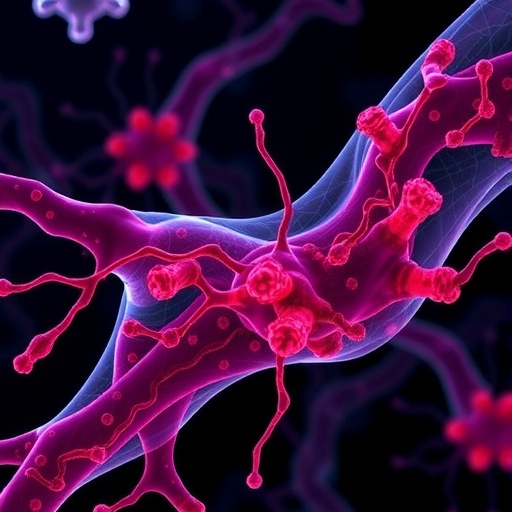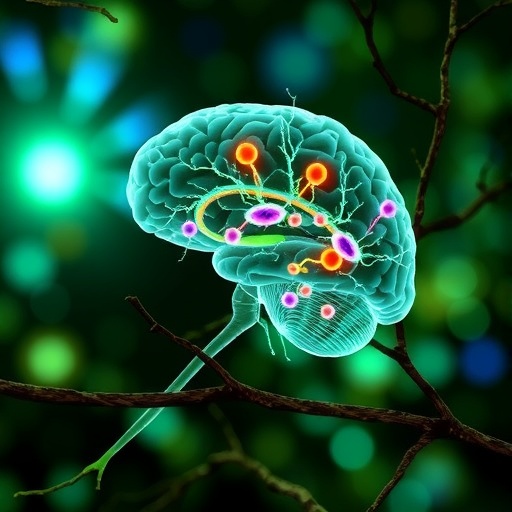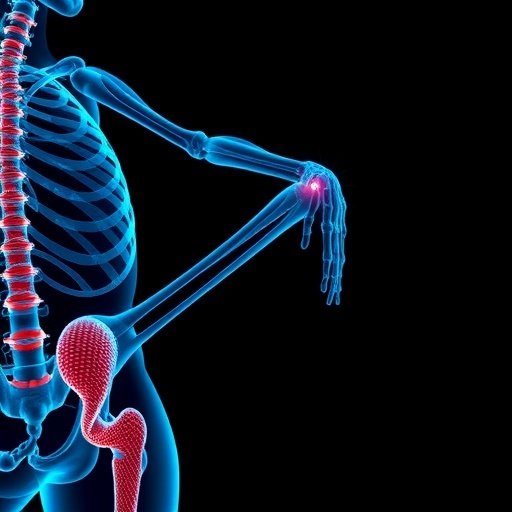PROTECT YOUR DNA WITH QUANTUM TECHNOLOGY
Orgo-Life the new way to the future Advertising by Adpathway
In a groundbreaking study that challenges conventional approaches to fertility treatments, researchers at Osaka Metropolitan University have unveiled a critical factor that could revolutionize artificial fertilization protocols. By meticulously adjusting the timing of hormone administration to better correspond with the physiological maturity of ovarian follicles, the team demonstrated a remarkable increase in the number of ovulated oocytes in rat models typically resistant to superovulation techniques. This breakthrough not only sheds light on the complex interplay between hormone timing and follicle development but also carries profound implications for improving reproductive success in both veterinary and human medical fields.
For decades, the administration of fertility-inducing hormones in laboratory animals has adhered to established schedules, primarily involving two key hormones: equine chorionic gonadotropin (eCG) and human chorionic gonadotropin (hCG). Typically, eCG is employed to stimulate follicular growth, followed by hCG administration approximately 48 hours later to trigger ovulation. This regimen, although effective in many strains, has exhibited pronounced variability in its efficacy, with certain rat strains such as Brown-Norway (BN) rats consistently producing a significantly lower yield of ovulated oocytes. These disparities have posed challenges in both research and clinical applications, prompting investigators to explore underlying causes for differential responsiveness among strains.
The study led by Professor Takehito Kaneko and Dr. Yuki Nakagawa critically examined the follicular development stages in BN rats post-eCG administration. Using detailed morphological analyses, they observed that at the conventional 48-hour mark, the preovulatory follicles in BN rats were not yet fully mature, suggesting an incomplete preparation for hCG-triggered ovulation. This insight fundamentally contradicted prior assumptions that low ovulation rates stemmed primarily from inherent physiological unresponsiveness, indicating instead that the timing interval between hormone injections might be suboptimal for certain genetic backgrounds.
Building upon these observations, the research team extended the interval between eCG and hCG injections from 48 hours to 72 hours in BN rats. This simple yet strategic modification allowed follicles sufficient time to reach a state of complete maturity, as evidenced by histological assessments. The results were striking: the average number of ovulated oocytes surged from a meager seven to approximately 43, aligning BN rats’ ovulatory response with that of typically high-responder strains such as Wistar rats. Moreover, subsequent fertilization experiments revealed that almost half of these oocytes developed into healthy, normal offspring, confirming the functional viability of the retrieved eggs.
This discovery underscores the paramount importance of synchronizing hormone administration protocols with the intrinsic kinetics of folliculogenesis. Folliculogenesis, the process by which ovarian follicles mature and prepare for ovulation, varies not only across species but also among different genetic strains within a species. The prolonged interval allowed BN rat follicles to properly complete key developmental milestones, including granulosa cell proliferation, antrum formation, and increased sensitivity to luteinizing hormone surges, culminating in successful ovulation upon hCG stimulation.
Beyond immediate practical implications for laboratory research, these findings resonate with broader reproductive challenges faced in medicine and conservation biology. Many infertility cases in humans could stem from analogous discrepancies in follicle maturation timelines, which current standardized hormone treatment regimens overlook. By tailoring the timing of hormone administration based on real-time follicular maturity markers, clinicians could potentially enhance superovulation outcomes, increasing the number and quality of oocytes available for in vitro fertilization procedures, thereby improving pregnancy rates.
Furthermore, the implications extend to the realm of endangered species management. Artificial reproductive technologies are increasingly employed to bolster populations of species with critically low birth rates. However, variability in reproductive physiology across species has made it difficult to standardize protocols. This study’s demonstration of the critical role timing plays suggests that customized hormone treatment intervals, informed by detailed monitoring of follicle development, could significantly improve success rates in assisted reproduction efforts for at-risk wildlife.
At a molecular level, the study also prompts further exploration into the mechanisms controlling follicle responsiveness and maturation. The differential timing observed suggests underlying genetic and endocrine regulatory pathways that modulate follicular dynamics. Investigations into gene expression patterns, receptor sensitivities, and intracellular signaling cascades during the inter-hormonal interval could unveil new targets for pharmacological interventions designed to optimize superovulation across diverse populations.
Professor Kaneko’s statement emphasizes a paradigm shift: “Strains with low ovulation rates typically respond poorly to artificial fertilization methods, but our findings suggest that it is not that they inherently respond poorly. Instead, follicle development is insufficient, leading to delayed oocyte development and fewer ovulated oocytes.” This perspective reframes reproductive challenges not as insurmountable biological limitations but as logistical gaps that can be addressed through refined treatment protocols.
The research methodology combined rigorous animal experimentation with precise timing adjustments and comprehensive outcome assessments, including ovulated oocyte counts, fertilization success, and embryonic development rates. The study’s strong experimental design and reproducibility attest to the robustness of its conclusions, laying a firm foundation for subsequent translational research.
As the field moves forward, the integration of follicular imaging modalities and biomarkers could allow personalized optimization of hormone schedules. Ultrasound technologies and hormonal assays might be employed to determine the ideal timing for hCG administration in individual patients or animals, thus maximizing outcomes while minimizing drug exposure and side effects.
In sum, the Osaka Metropolitan University team has not only identified a critical temporal factor governing superovulation success but has also paved the way for a nuanced, biology-driven approach to fertility treatments. By aligning hormone administration with the natural rhythms of follicular growth, their work promises to enhance reproductive efficiency across species, offering hope for improved treatments of human infertility and effective conservation of endangered animals.
The study is published in the journal Heliyon and represents a significant advance in reproductive biology and assisted reproductive technologies. It highlights how a deeper understanding of ovarian physiology can translate into practical interventions with profound benefits.
Subject of Research: Animals
Article Title: Importance of the eCG-hCG injection interval for superovulation, fertilization, and embryonic development in rats
News Publication Date: 12-Jul-2025
Web References: http://dx.doi.org/10.1016/j.heliyon.2025.e43619
Image Credits: Osaka Metropolitan University
Keywords: Superovulation, Follicle Maturity, eCG administration, hCG injection timing, Artificial fertilization, Oocyte development, Rat models, Brown-Norway rats, Fertility treatments, Assisted reproduction, Embryonic development, Endangered species reproduction
Tags: artificial fertilization protocolsBrown-Norway rat fertilityequine chorionic gonadotropin usefertility hormone administration schedulesfertility treatments in ratshormone timing and fertilityhuman chorionic gonadotropin administrationhuman fertility advancementsimproving reproductive outcomes in medicineovulated oocytes increasesuperovulation techniques in laboratory animalsveterinary reproductive success


 4 hours ago
9
4 hours ago
9





















 English (US) ·
English (US) ·  French (CA) ·
French (CA) ·